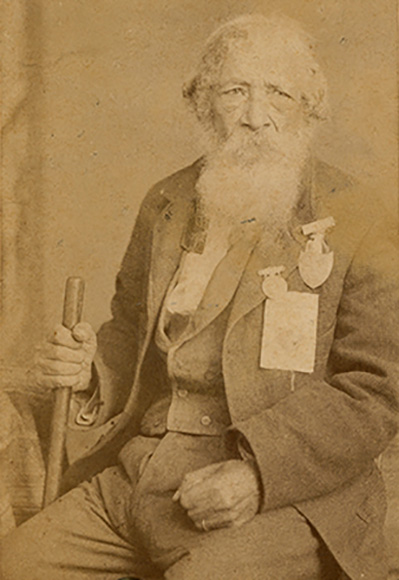During his spring 1814 campaign along the Chesapeake Bay, British Admiral Alexander F.I. Cochrane issued a proclamation, promising freedom, evacuation, and land to all slaves who chose to join Britain in the war against the United States; some 600 slaves became British Colonial Marines, fighting during the campaign against Washington, D.C. and Baltimore.

The Historic New Orleans Collection, acc. no. 58-101-L.3.1
Throughout the War of 1812, more than 4,800 slaves fled their bondage, and were evacuated as refugees to Bermuda, and later to Canada, Trinidad, and other British colonies. When Admiral Cochrane began planning his Gulf Coast campaign, he anticipated refugee slaves would swell his ranks, supplement his army, and potentially topple American control of the region.
Meanwhile, in New Orleans, Jordan Bankston Noble had a choice to make. Would he join with the British or the Americans? Born a mulatto slave in Augusta, Georgia, in October 1800, he arrived in New Orleans in 1811; the following year he became the drummer of the 7th U.S. Army Regiment. When British forces advanced on New Orleans in December 1814, the 14 year-old boy did not flee to the British but rather handled his drum like a veteran during the subsequent campaign.
Noble kept a steady beat while Major Louis D’Aquin led his company to meet the British for the fierce night fighting of December 23, 1814. On January 8, 1815, “the rattle of his drum was heard [even] amidst the din of battle,” “in the hottest hell of fire” during the main British attack at Chalmette.
Noble remained in New Orleans after the war, gaining his freedom during the 1830s. He participated in the Second Seminole War and the Mexican War, and in April 1861 as the United States descended into Civil War, Noble and approximately 1,500 Louisiana free men of color offered their services to the Confederacy to defend New Orleans. When the city fell to Federal control in the spring of 1862, Noble patriotically volunteered for the Union army, organizing a company of free blacks known as the “Native Guards” that served during the summer of 1863. His immediate switch of sides reflected his long-standing service as a federal soldier and desire to be an American.
In the early morning of June 20, 1890, 90 year-old Jordan Bankston Noble died. The following day, sadly reporting the “death of ‘the Drummer Boy of Chalmette,” the Daily Picayune ran a woodcut picture of the “Colored Veteran of Four Wars,” and encouraged all to attend his Saturday-afternoon funeral so they could look on the white hair and “familiar face of ‘Old Jordan’” one last time. Finally, it stated that Noble would be buried in the city’s St. Louis Cemetery No. 2, Square 3. Jordan Noble’s life almost spanned the entire nineteenth century. And even after his fighting days had passed, Noble and his “well-worn drum” still entertained audiences. His music provided an entree into respectability, as he held on tightly to his legacy as the drummer of the Battle of New Orleans. His drum embodied the choice he and other slaves and free blacks had made during the crisis of 1814-15.
Last updated: March 10, 2015
